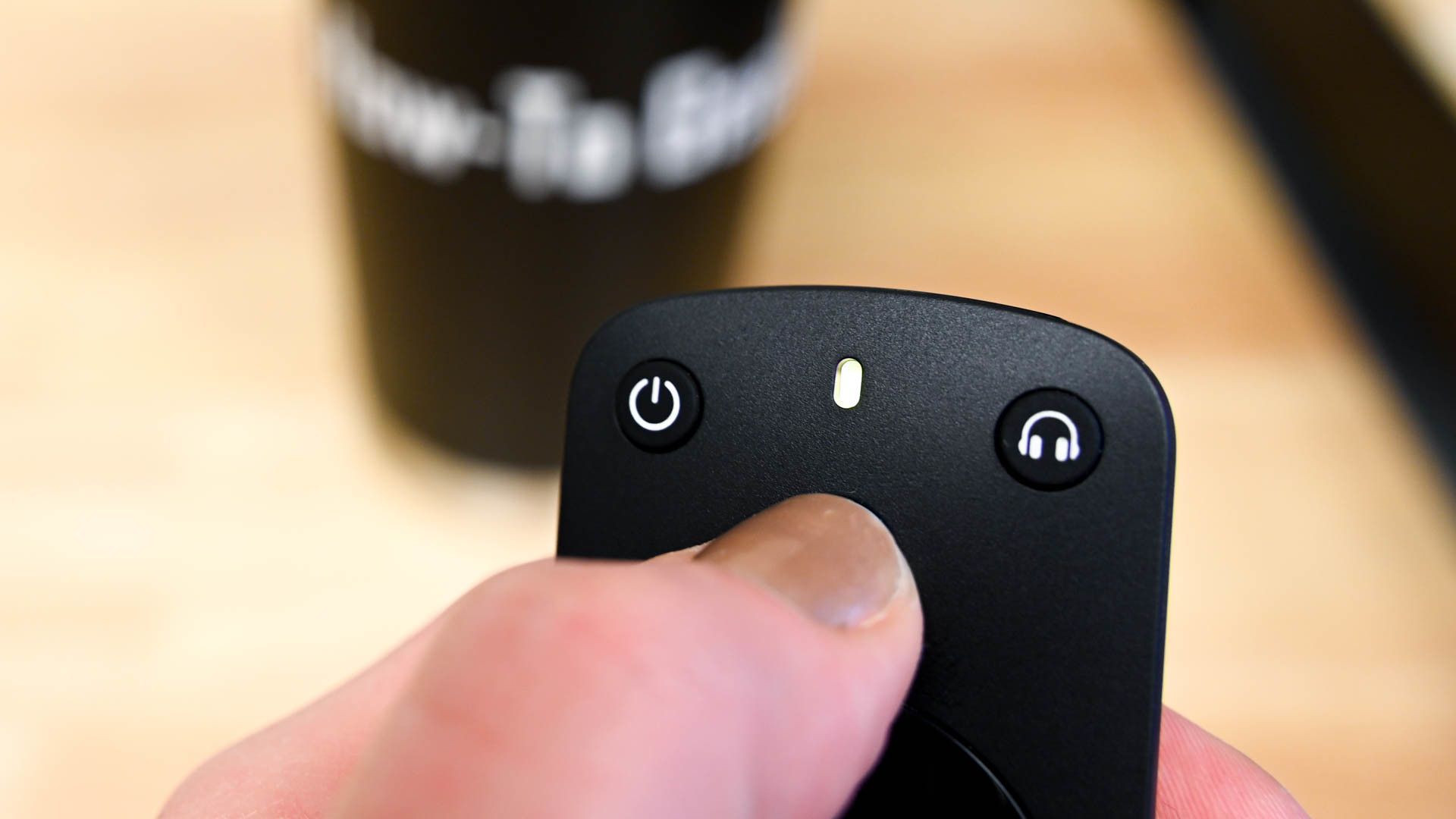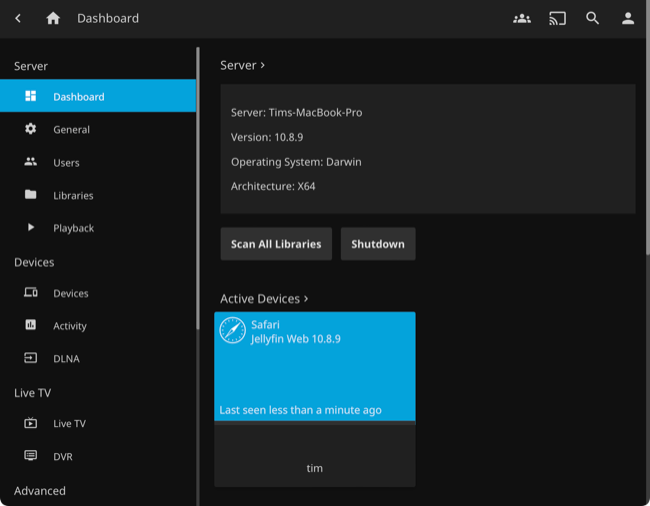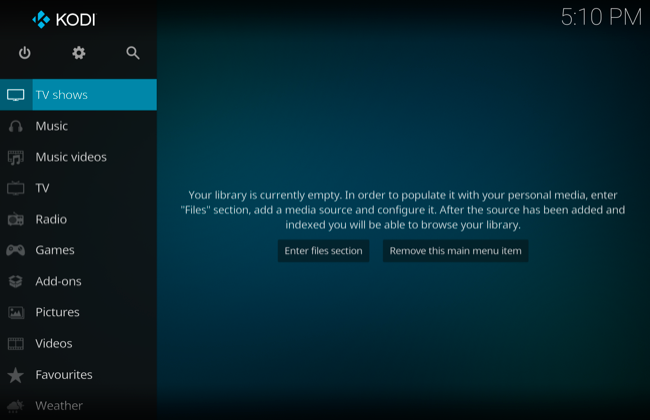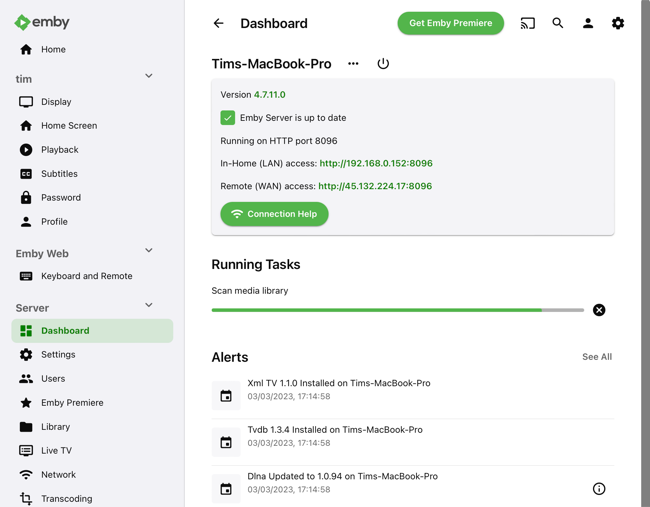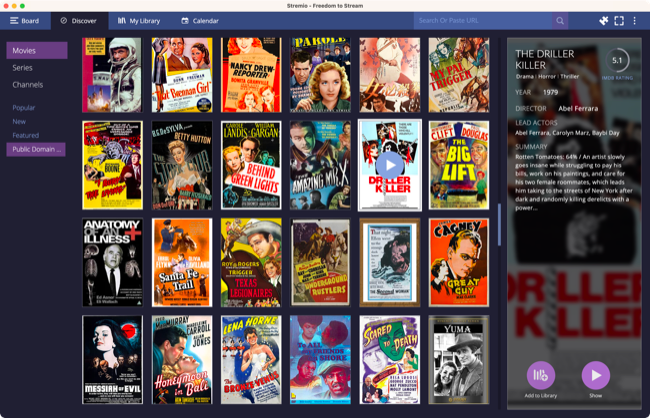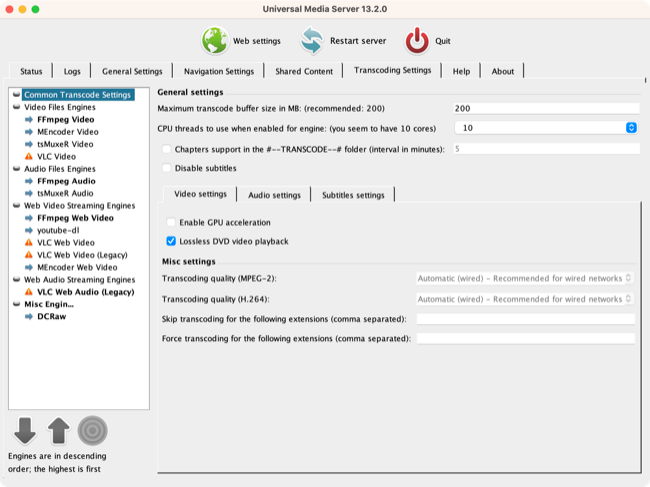Quick Links
Looking for a Plex alternative for local and remote media streaming? Though Plex enjoys excellent support on a wide range of devices, it's far from the last word in media streaming. Here are some alternatives you might want to try.
1. Jellyfin
A compelling alternative to Plex, Jellyfin started life as a fork of Emby in 2018. What makes Jellyfin so attractive is that it's both open-source and completely free to use. None of its functionality is hidden behind a paywall, and it closely matches Plex in terms of the features on offer.
Like Plex, Jellyfin must be installed as a server. With the setup out of the way and your local media directories indexed, Jellyfin fetches metadata from the internet to better categorize your movies, TV shows, music, and more. The streaming solution can also handle live and recorded TV, books, photos, and remote play syncing so you can watch movies with friends or family who are far away.
The server component is available for Windows, macOS, many flavors of Linux, and as a platform-agnostic Docker package. Jellyfin can then be accessed on the client side via a standard web browser, an official desktop client (for Windows, Mac, and Linux), as a plugin for Kodi and Roku, via official Android and iPhone or iPad apps, as an app for WebOS (LG) TVs, and even via an app that runs on the Apple TV. It even functions as a DLNA (UPnP) media server for devices that lack a dedicated client.
Jellyfin lacks the library of live TV channels and streaming movies and TV shows that you'll get with Plex, but it also doesn't gate off features like hardware transcoding and DVR functionality. You can try Jellyfin out for yourself using the Jellyfin Demo on the project homepage.
2. Kodi (formerly XBMC)
Kodi and Plex are quite different in terms of application, but depending on what you're trying to achieve Kodi might make a suitable replacement. While Plex (and closer alternatives like Jellyfin) are installed as servers, Kodi is a media player that should be installed locally on the device you want to use as a media center.
This is commonly an old computer you no longer need, something custom-built in a nice media center case, a Raspberry Pi, and just about anything that can run Windows, Linux, or macOS. Once installed on your media center of choice, Kodi can pull in media from local and remote servers, and you can even set it up to keep multiple Kodi instances in sync.
Kodi supports most media including movies, TV shows, and music with metadata scrapers to label everything nicely. It also supports photo sharing, DVR-style recording, running of games and emulators, a wide range of skins, a vast library of plugins (which include live streaming from TV and websites like YouTube or Twitch), a web interface for streaming to other devices, and remote controls (including official apps for Android and iOS).
Kodi works as a standard DLNA uPnP server to bridge the gap between your main entertainment center and other devices that are on the same network. You don't have to plug all of your local media into your main Kodi machine (though that would be the fastest way of accessing it) since you can map network shares, NAS drives, and more. Like Jellyfin, Kodi is open-source and entirely free to use.
3. Emby
Like Plex and Jellyfin, Emby is a media streaming platform that must be installed as a server. The server can run on computers running Windows, macOS, Linux, and even FreeBSD. It also runs natively on many NAS drives including those running FreeNAS or proprietary systems from Synology and Western Digital. Alternatively, run Emby on Android, your NVIDIA Shield streaming box, or as a containerized app using Docker.
Emby is then accessed using client apps for a good range of platforms including Windows, macOS, and Linux, devices like Android TV and the NVIDIA Shield, and even smart TV platforms like Samsung's Tizen and LG's WebOS. Older and unsupported devices can access Emby's media catalog using DLNA (uPnP) streaming.
Like Plex, Emby gates off some of its best features behind a premium upgrade. This works as a subscription starting at $4.99/month, and grants access to offline media (downloading to Android, iOS, and Windows clients), live TV recording via DVR functionality, access via certain platforms (Android, Fire TV, Xbox, and PlayStation), hardware transcoding, CarPlay, and Android Auto support, and more.
So why bother with Emby? The platform attempts to make it as easy as possible to access your media remotely, over the internet. If you're looking for a platform that isn't Plex to access your files while away from home (or even share with others, remotely) then Emby might be worth the modest monthly fee.
4. Stremio
Stremio is another alternative to Plex that emphasizes streaming services (hence the name). It's possible to add your files, but Stremio shines for its huge catalog of user-contributed add-ons that allow streaming from a huge range of sources. You can also use Magnet links or play video streams within the Stremio player.
Like Kodi, Stremio is primarily designed as an endpoint for consuming media. The app ideally runs on whatever computer or Android device is plugged into your TV, though the app includes the ability to cast wirelessly using a Chromecast. You can also use game controllers to control the Stremio interface if you want.
The app is focused largely on discovery, with a "Discover" tab pointing you in the direction of trending new releases and streaming content. There's a huge library of public domain works included out of the box, and though this content is available to anyone (mostly via the Internet Archive) it's still a handy repository to have available.
Stremio lacks some of the polish and advanced features you'll find in Plex, Jellyfin, and Kodi. It's got no DLNA (UPnP) support, but it does include hardware decoding and integration with Facebook, and it certainly bucks the trend in terms of media sources. There are a lot of community add-ons available, and none of the content is vetted by the Stremio team so you might want to tread carefully.
5. A Barebones DLNA/uPnP Server
If your primary goal is to make your local media available for streaming over a local network, a simple DLNA media server should do the trick. There are many free options available, and many of the solutions above (including Kodi and Jellyfin) already include DLNA support.
Universal Media Server is probably one of the most ubiquitous and easy-to-use solutions. The app is available on Windows (with Chocolatey support), macOS (with Homebrew support) and Linux (via a myriad of package managers) or as a containerized Docker application. It's free to use, includes a web interface, can stream content from the internet, and is compatible with a huge range of uPnP devices.
If UMS doesn't do it for you then you might want to try Serviio instead. It's available for Windows, macOS, and Linux with separate versions available for QNAP and Synology NAS drives. It includes online streaming, a plugin system, renderer profiles (and per-IP profile assignment), and more. Upgrade to the Pro version for $25 to get a web-based player, online streaming, Android app, and more, which you can learn about on Serviio's upgrade page.
Things to Keep in Mind When Choosing a Plex Alternative
Plex is almost universal at this point, with client apps and plugins available for a huge range of devices and existing systems. It fits right into existing setups, which makes it attractive from an ease-of-use standpoint.
You might find it harder to integrate a system like Jellyfish or Kodi (which both take different approaches to media streaming) into your setup, though their open-source and free-to-use nature certainly makes them attractive. Fortunately DLNA (uPnP) streaming can fill the gap in many instances, just be aware that the text-based interface isn't anywhere near as attractive as what you can expect from a native client.
If you're fond of ditching Plex for one of these alternatives, it might be worth making a small investment in hardware on which to run them. Cheap solutions include a Raspberry Pi, Fire Stick, or a device that runs Android like an NVIDIA Shield or Google Chromecast.
The Big Screen Experience
If you're getting serious about home theater, you might want to look into some of the best TVs and best soundbars to make the most of the experience. Alternatively, consider buying a projector instead.

